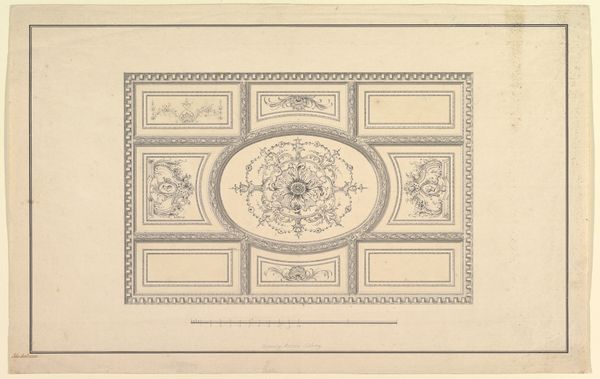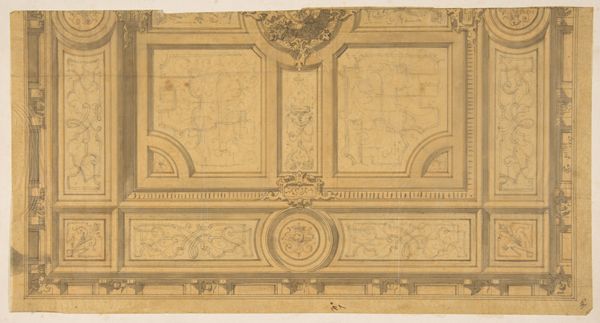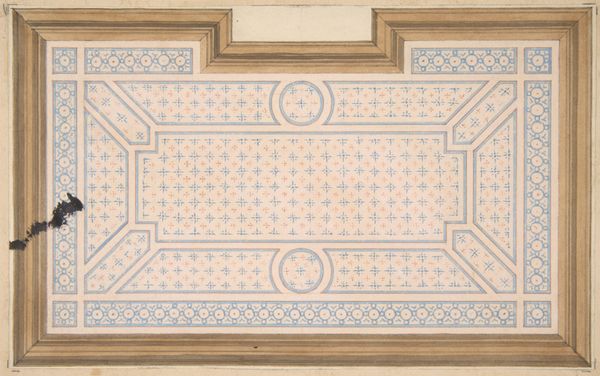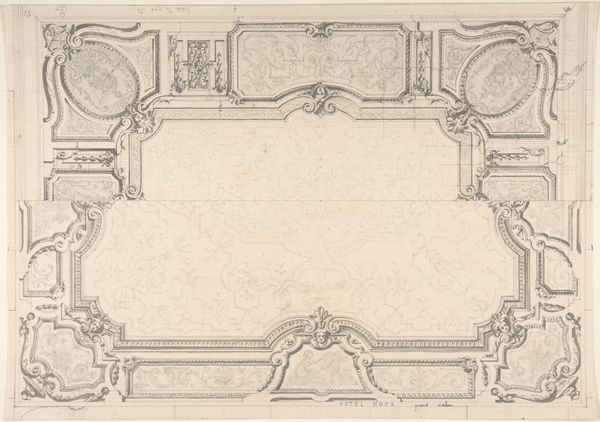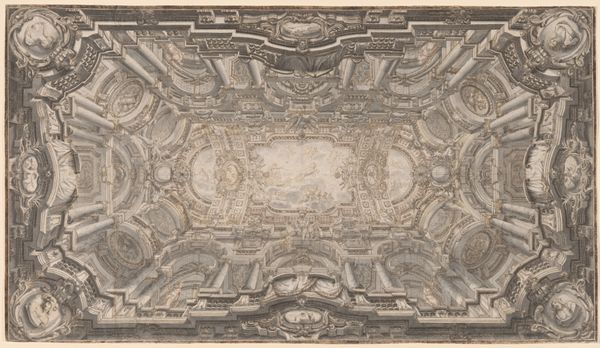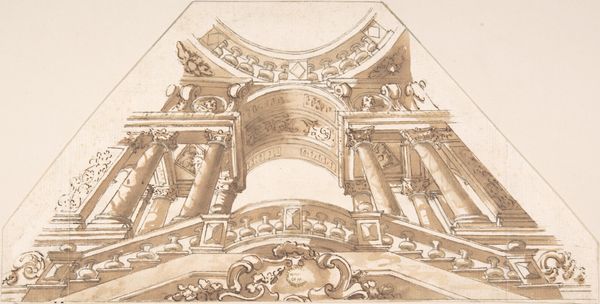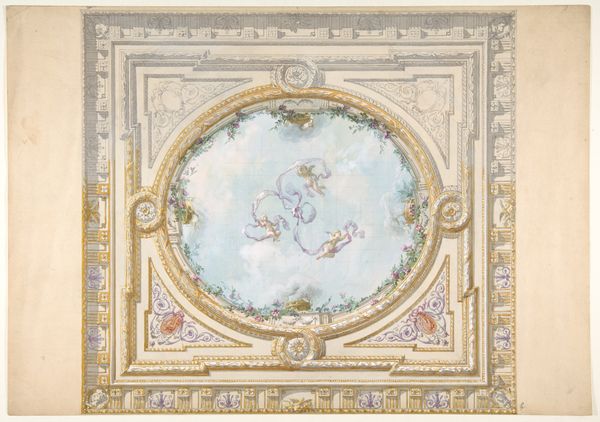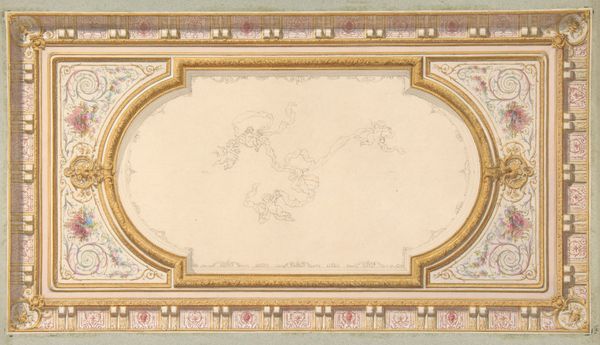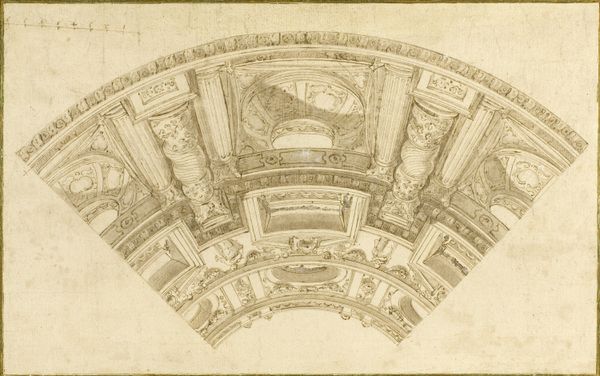
drawing, architecture
#
drawing
#
neoclacissism
#
perspective
#
trompe-l'oeil
#
architecture
Dimensions: sheet: 59.8 × 45 cm (23 9/16 × 17 11/16 in.)
Copyright: National Gallery of Art: CC0 1.0
Pietro de Angelis made this design for a trompe-l'oeil ceiling decoration with graphite and gray wash on laid paper. Trompe-l'oeil, meaning "deceives the eye" in French, is an art technique that uses realistic imagery to create the optical illusion that the depicted objects exist in three dimensions. Here, in late 18th or early 19th century Italy, the artist is attempting to create the illusion of looking up into a much larger space than is actually there, a grand architectural space, such as might be found in a palace or church. The columns and coffered ceiling create a sense of depth, while the figures in the central panel add a touch of classical elegance. To understand this drawing better, we might look at architectural treatises, which could explain the conventions for designing such spaces, and to the history of interior decoration in Italy, especially in Rome, where the artist lived and worked. The social history of art reminds us that art is never created in a vacuum but is always shaped by the culture and institutions of its time.
Comments
No comments
Be the first to comment and join the conversation on the ultimate creative platform.
